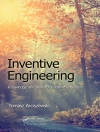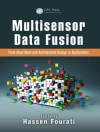Food preservation by irradiation is gaining recognition as a technology that is more environmentally benign than other current processes such as post-harvest chemical fumigation, it has less impact on thermally sensitive compounds than thermal decontamination technologies such as hot water or steam, and the technology is more accessible and cheaper. As the technical and economic feasibility, as well as the level of consumer acceptance, have increased its use has been growing fast. International organizations including the Food and Agriculture Organization of the United Nations (FAO), the International Atomic Energy Agency (IAEA) and the World Health Organization (WHO) have coordinated and worked with others to develop norms and review the safety and efficacy of irradiated foods. Commended in the Foreword by Carl Blackburn, Food Irradiation Specialist, Joint FAO / IAEA Division of Nuclear Techniques in Food and Agriculture, this book makes a strong case for the use of this overwhelmingly safe food processing technique.
This comprehensive book is a useful reference for food technologists, analytical chemists and food processing professionals, covering all aspects of gamma, electron beam and X-ray food irradiation, its impact on food matrices and microorganisms, legislation and market aspects. It is the first book to cover control and structural analysis in food irradiation and, being written by leading experts in the field, addresses the current global best practices. It contains updated information about the commercial application of food irradiation technology, especially regarding the type of radiation based on food classes and covers dosimetry, radiation chemistry, food decontamination, food quarantine, food processing and food sterilization.
Mục lục
Introduction; International Standards and Regulation on Food Irradiation; Gamma Irradiation Plants; Electron Beam and X-ray Equipment for Food Irradiation Applications; Dosimeters for Gamma, E-beam, and X-ray Food Irradiation; Food Phantoms and Absorbed Dose Simulation; Software for Food Irradiation Simulation and Equipment Validation; Packaging for Food Irradiation; Food Irradiation for Phytosanitary and Quarantine Treatment; Food Irradiation as Sanitary Treatment; Food Irradiation Chemistry; Methods Combined with Irradiation for Food Preservation; Physical Detection Methods; Chemical Methods; Biological Techniques; Toxicological Aspects of Irradiated Foods; Successful Marketing of Irradiated Foods; Technical and Economic Considerations in Food Irradiation; Qualification and Certification of Ionizing Radiation Facilities; Global Status and Commercial Applications of Food Irradiation












